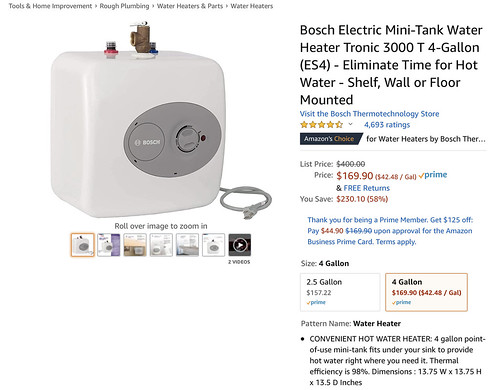FastEddieB
Touchdown! Greaser!
- Joined
- Oct 14, 2013
- Messages
- 11,419
- Location
- Lenoir City, TN/Mineral Bluff, GA
- Display Name
Display name:
Fast Eddie B
Our new TN “Pole Barn” seems well thought out regarding both electrical and plumbing. One thing that could be improved however is the long delay in getting hot water to the kitchen sink.
I recall my parents had something installed in their D.C. home that provided near instant hot water at their kitchen sink. I think it was appropriately called an “Insta-Hot” or some such.
I see devices such as this on Amazon:

Installation looks pretty straightforward.
Anyone have experiences or recommendations regarding these before I pull the trigger?
Thanks in advance.
I recall my parents had something installed in their D.C. home that provided near instant hot water at their kitchen sink. I think it was appropriately called an “Insta-Hot” or some such.
I see devices such as this on Amazon:

Installation looks pretty straightforward.
Anyone have experiences or recommendations regarding these before I pull the trigger?
Thanks in advance.
